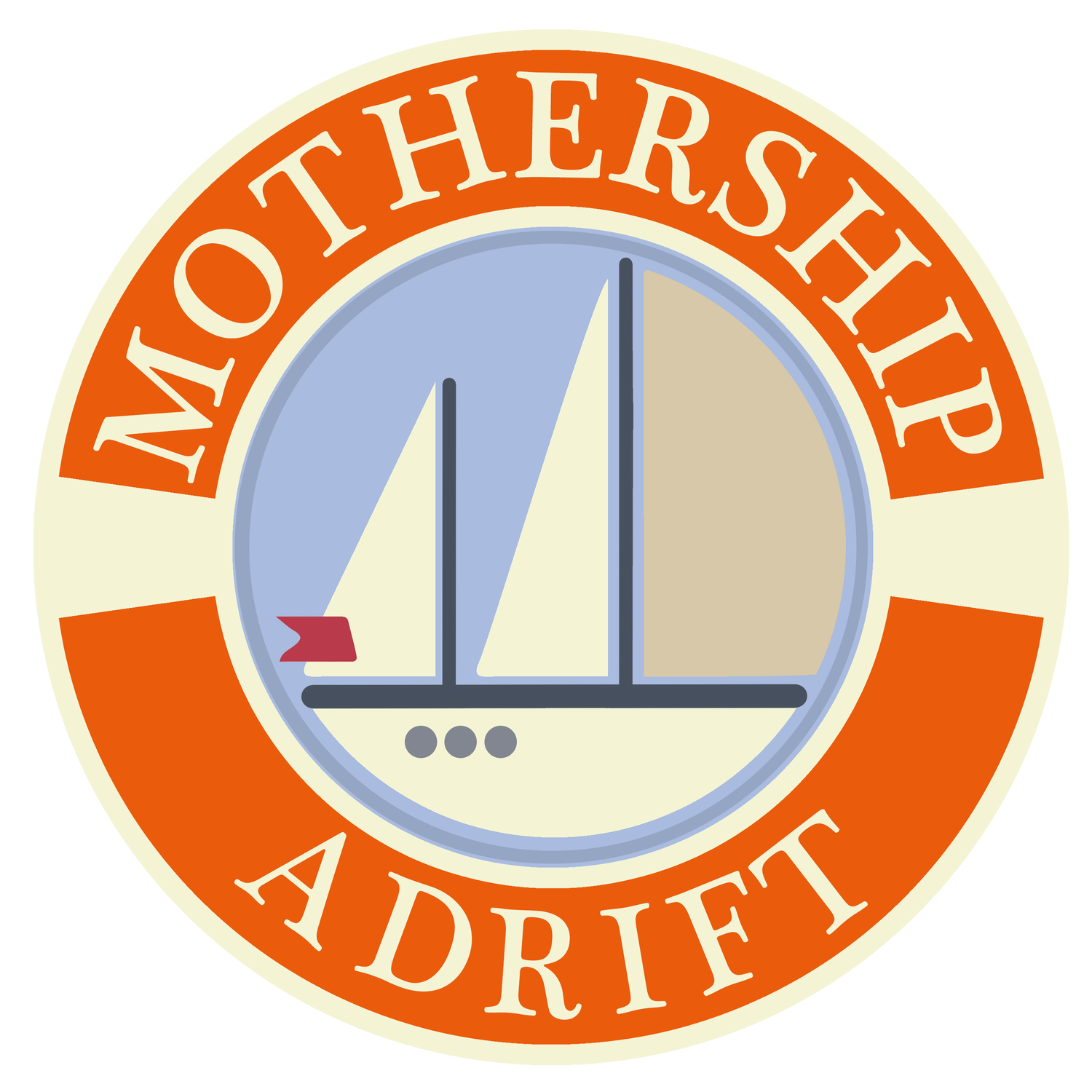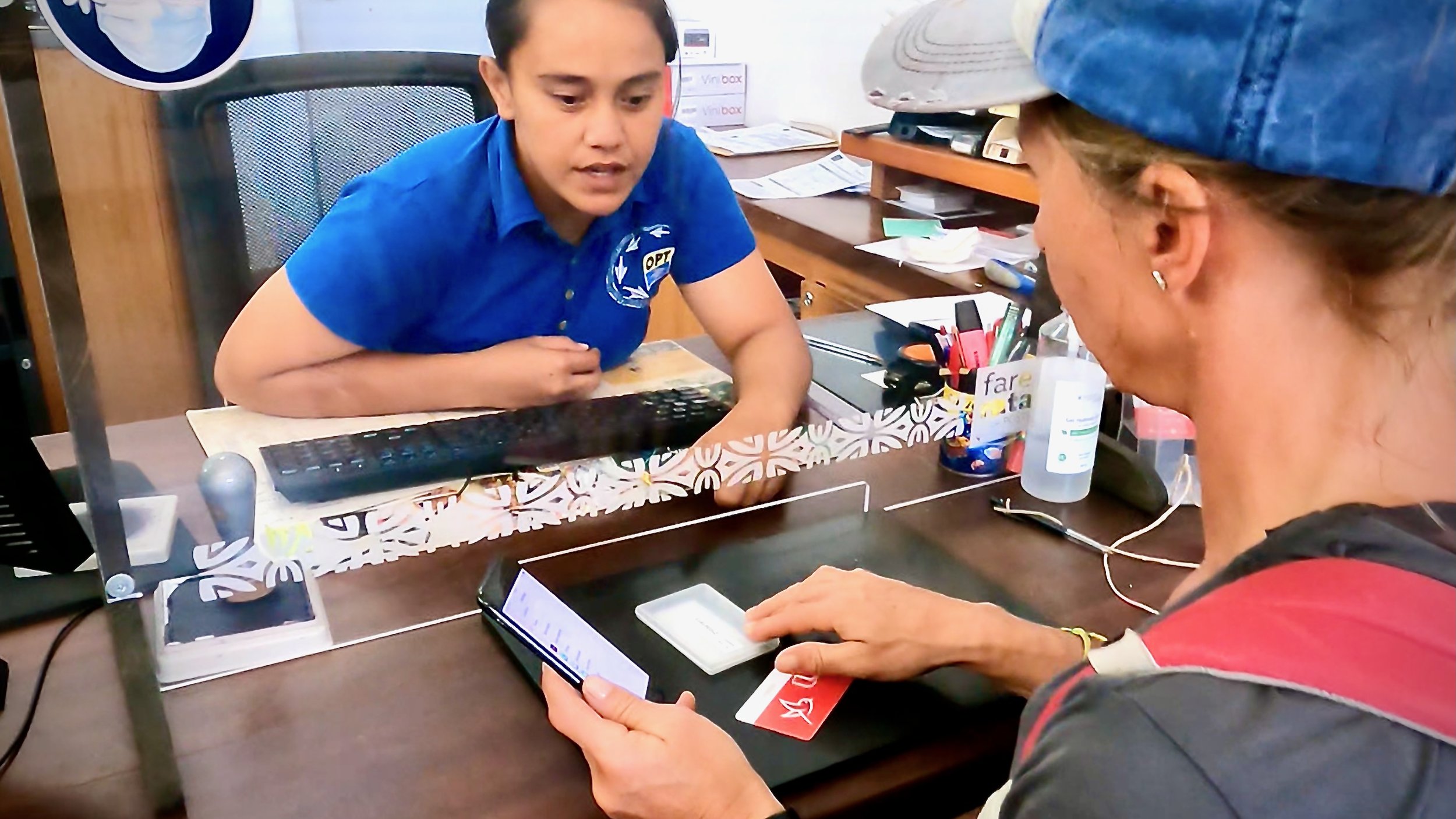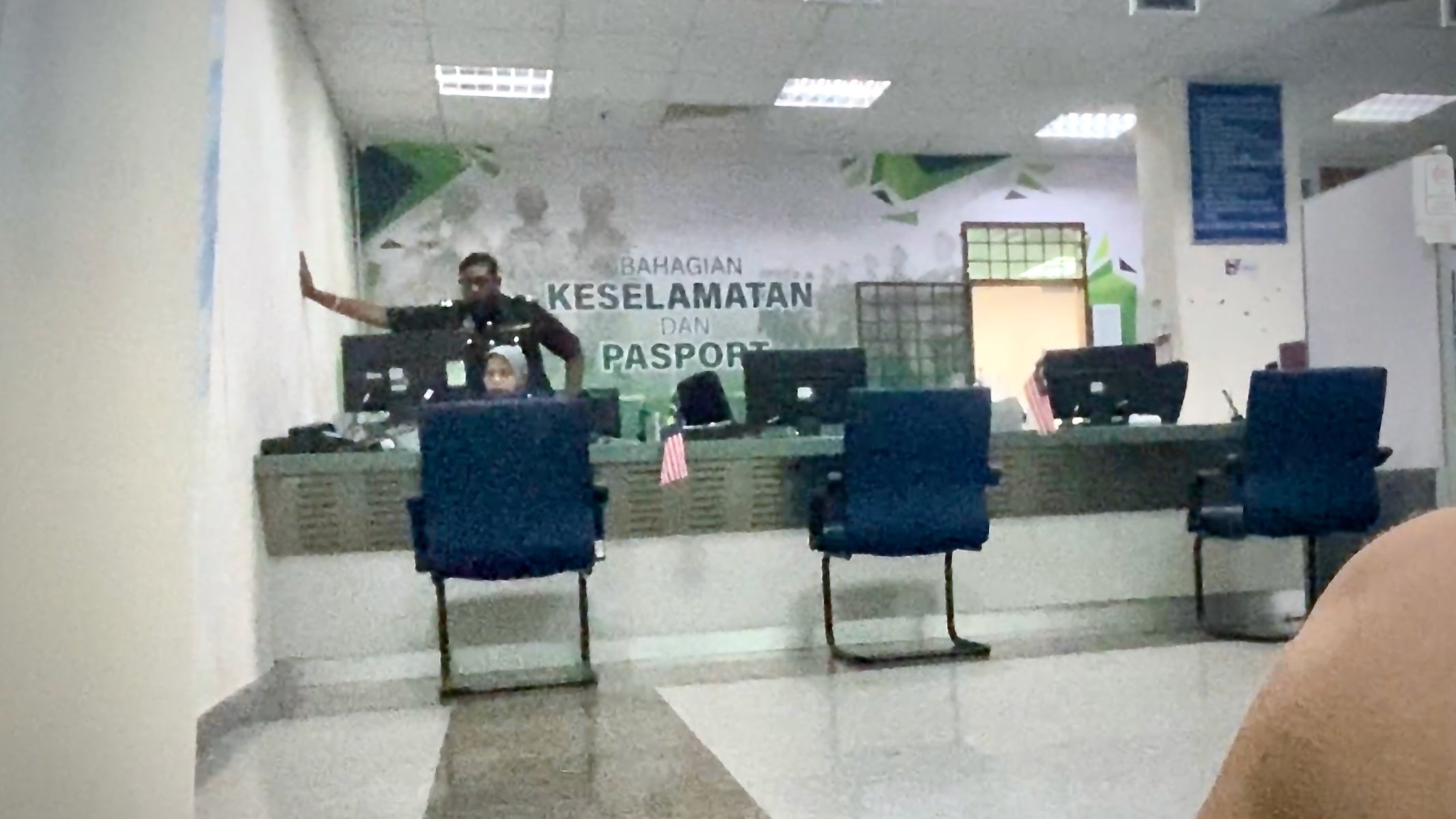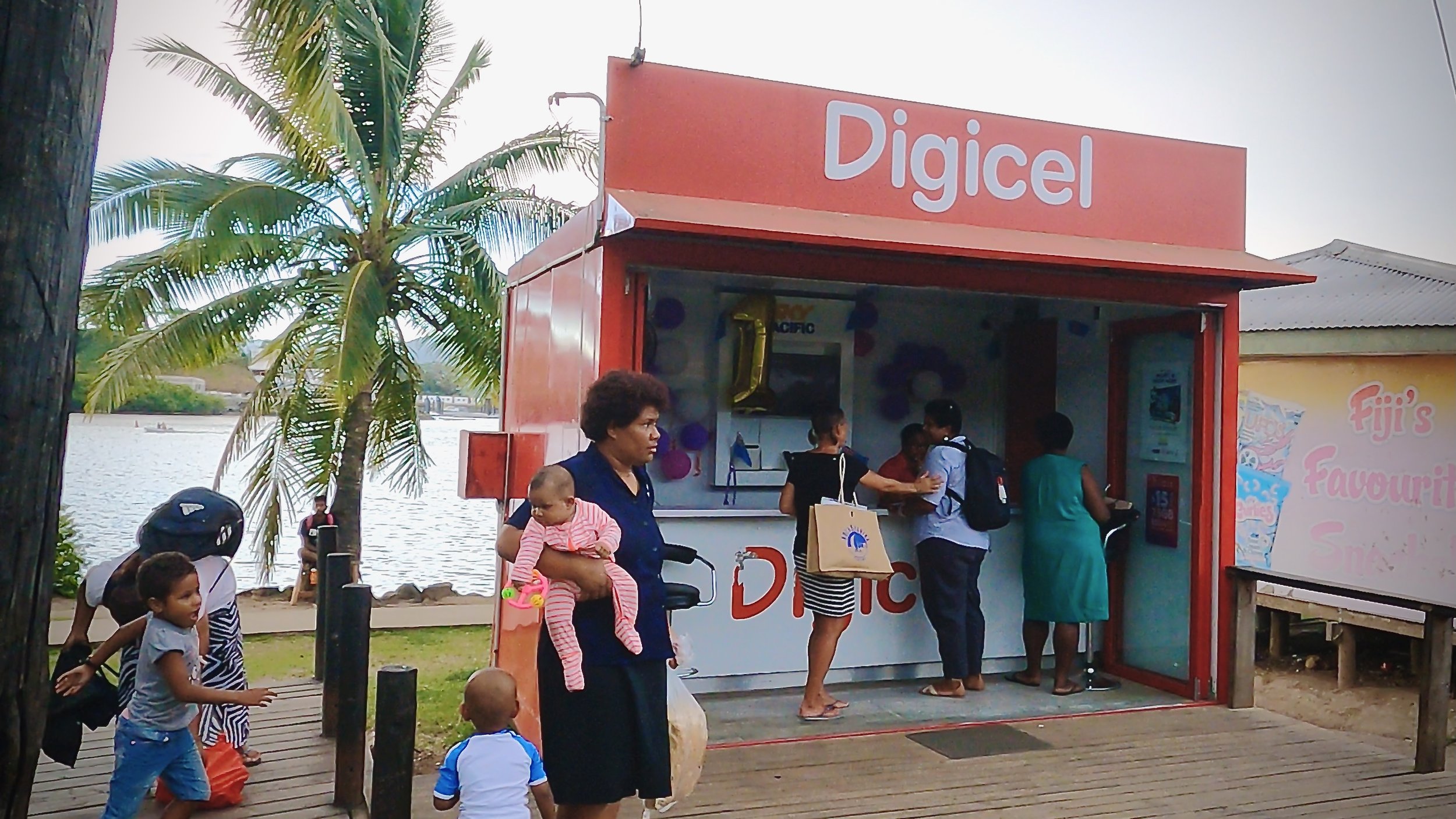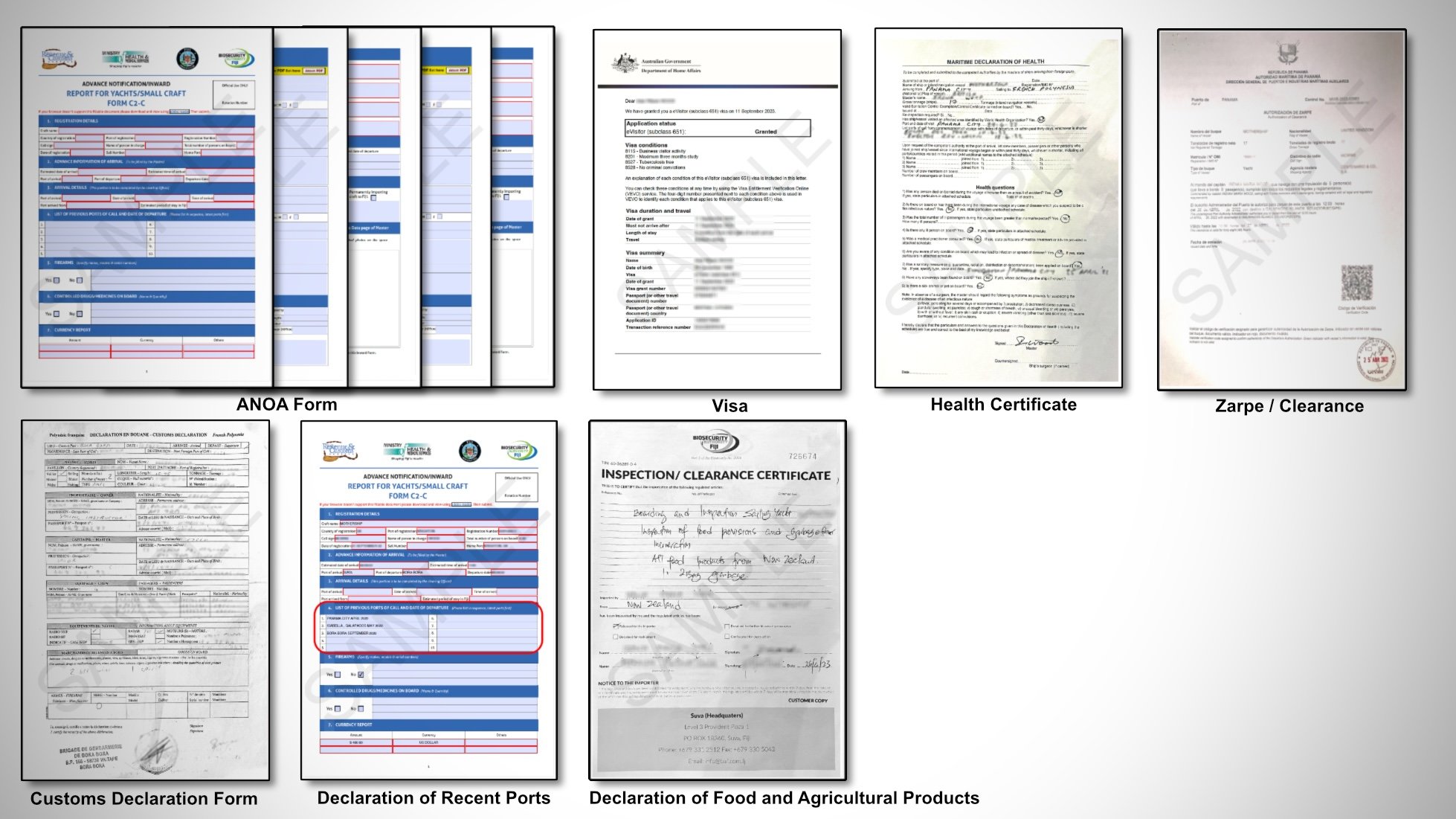Clearing-In to Foreign Countries Pt:02 - Paperwork
01-04-02
“The choice for most people lies between freedom and conformity, and for the great bulk of people, conformity is better ”
Buying a Sim in French Polynesia in order to get online to fill in more forms!
Organise your Life and Paperwork
In the previous post, “Clearing-In to Foreign Countries Pt:01,” I explained that clearing in involves a delightful dance with multiple government agencies that in theory all work together in perfect harmony. However, a bureaucrat’s first instinct often seems to be to make the clearing-in rules impossible to navigate and then blame you for not following them.
The process can sometimes be so frustratingly slow and convoluted that the only way to track the passage of time is by watching the progress of the mobile game being played by the bored official tasked with clearing you in. Sometimes, the biggest challenge is to remain calm, collected, and ensure that your polite smile doesn’t morph into an angry rant.
Once, when clearing out of Malaysia we spent the entire morning in immigration sat on strangely sloping chairs only to discover our form had been ‘mislaid’ between desks. We were told to return after the two hour lunch break to complete the process. After a lengthy taxi ride into town for lunch we returned at the prescribed time, only to be told the official dealing with our form didn’t work in the afternoon! The form was then merely plucked out of a drawer, stamped and handed to us. Then to rub salt into the wound, the local taxi app. GRAB, crashed and we had to resort to waiving down a random car to get back into town to continue the process with the other agencies.
Progress can be slow when dealing with officialdom. Langkawi, Malaysia
Fortunately, most of the information required is straightforward. It’s the same set of boring details you already know; your name, your boat, your intentions, your soul (well, almost), all spewed onto various bits of paper and handed over to the right person in the right order to receive the rubber stamp of approval. So, in this post, I’ll explain how to organise your life and paperwork so you can navigate this bureaucratic obstacle course with as little drama as possible.
E-Forms
In Suriname, despite completing the online Advance Notice of Arrival (ANOA) form well in advance, we were still required to provide a hard copy while clearing in. Unfortunately, the printer, photocopier and Wi-Fi in the immigration office weren’t working, so we were sent on a wild goose chase, first to find an ATM to get the cash to buy a SIM card to put in our phone in order to download the ANOA form we had already completed online, then to a photocopy shop to print it out before returning to the immigration office to fill out all the information... again.
To top it off, when we needed to make a crew change two weeks later, they couldn’t locate any of our information, either online or in their paper filing system. And yes, we had to repeat the entire process... AGAIN!
Don't assume government offices will have working printers, photocopiers or even wifi. Always keep several hard copies of any documents and online forms.
So, even if you’ve completed online forms like the ANOA or submitted them via email ahead of time don't get smug! Be prepared to fill them out AGAIN upon arrival and/or present a hard copy of the supposedly "online" form. This also includes scanned copies of passports, passport-style photos of your crew, and pictures of your boat. To save yourself time and frustration, always keep copies (or screenshots) of these documents on your phone too. This allows you to resend them online again while in the office.
First find an ATM to get the cash for a SIM card in order to download a form, to print out at a copy shop before returning it to the immigration office filled out with the same information that you already submitted online!
If security is a concern, store them in a hidden folder or use a cloud service like Google Drive. Just remember that cloud-based storage will only be accessible if you have a mobile network or Wi-Fi connection - which again is not guaranteed unless you have a local working SIM in your phone.
Physical Documents Forms and Boat Papers
Some agencies will expect you to provide your own version of a document eg., a 'Recent Port List’ or, ‘Crew List’ while others will have their own official document for you to fill in. Sometimes these may be a section in a much larger form (in Fiji the ANOA form is 13 pages long!) Whatever the case, it is always worth keeping ALL the information in your folder in the form of 'cheat sheets' to copy the information from.. or pass to another crew member to copy out while you’re filling in other forms. Remember to keep them updated too!
Sometimes you will also be asked to provide information unexpectedly via VHF to passing patrol boats so it makes sense to keep your information organised and accessible.
We keep this 'Cheat Sheet' in our folder as well as a laminated version next to the VHF and update the 'Ports of Call' by whiteboard marker as we go. It contains a summary of the information most officials, marinas and patrol boats require.
When cruising the South Coast of Italy we had to pass all our ORIGINAL documents to a passing patrol boat via a large fishing net over a choppy sea. The Patrol boat then turned around and whizzed off towards the coast, presumably to get a better wifi signal to verify our credentials. At times like this you'll be relieved you kept everything in a tightly bound folder.. and copies of the originals!
While there are many exceptions, variations, and even bewilderment associated with the clearing-in and out processes, if you make yourself familiar with the list below, and the information required, you should be covered for most eventualities.
For the sake of clarity and efficiency, I suggest you sub-divide a lose leaf folder into 3 sections, A, B and C and to store these documents in those sections.
Folder Section A: Official Boat Papers and Documents
Folder Section B: Crew Papers and Documents
Folder Section C: Copies of Official Documents and Forms from the Host Country that you have completed
Folder Section A: Official Boat Papers and Documents
Folder section ‘A’ should contain your Official Boat Papers, which includes the following documents:
Samples of Official Boat Papers and Documents in Section A for Clearing In.
Boat Registration: Boat registration is an official document issued by a maritime authority, confirming a sailboat's ownership and compliance with local regulations. Its purpose is to provide proof of the vessel's identity and legal status.
Bill of Sale: A legal document confirming the transfer of ownership from seller to buyer. When clearing-in at a foreign port, it serves as crucial evidence for authorities to verify ownership, ensuring that the person seeking entry has legitimate control over the vessel.
Boat Details: A self-made record of a sailboat's specifications, including its dimensions, engine information, safety equipment and dinghy/outboard details. This document serves as a reference for safety and compliance inspections. This should also include a photograph of the boat.
Photo of boat: A photo of the boat with the name clearly visible.
Boat Insurance: A Certificate of Insurance (COI) with proof of liability and expiration date. Some countries and marinas have specific insurance requirements such as ‘wreck removal’ in Malaysia and a 10 million dollar minimum liability for marinas in Australia. Check you have relevant cover for each stage of your journey.
Crew List: A self-made document detailing the names, nationalities, and passport information of all individuals on board a sailboat. It is required for immigration and customs purposes, ensuring compliance with entry regulations.
Hull Cleaning Record: Required by environmental agencies to help prevent the spread of aquatic invasive species. A self-made document (or sometimes an official form) providing proof of a clean hull that may be as simple as a recent, date-stamped photograph of your clean hull. Sometimes it may be a receipt for a recent hull cleaning service and/or antifouling service/treatment.
Folder Section B: Crew Papers and Documents
Folder section ‘B’ should contain Personal Papers, which includes the following documents:
Samples of Personal Crew Papers and Documents in Section B for Clearing in.
Passport: Described as ‘an official government document that verifies a person's identity and citizenship. Make sure all crew members have at least 6-12 months left before the expiry date as entry can be refused if there is less than that.
Vaccination Record: A document providing evidence of vaccinations received by individuals on the sailboat. It may be required by health authorities to prevent the spread of communicable diseases.
Medical and Travel Insurance: Often advertised as providing financial protection during trips by covering unforeseen events such as medical treatment, trip cancellations, or lost baggage. Personally we just take out the minimum legally required for any given situation and put savings made into a generic ‘emergency fund.’ Some countries however, insist on you taking out their national medical insurance, in which case you have no choice.
Drone Licence: Uncommon, but some civil aviation authorities require you to apply for a permit to fly your drone in their country and for that they require a registration certificate or licence from your home country.
Other Certificates: These could include skippers licence, driving licence, pet vaccinations, firearm certificates etc.
Bill/Mortgage Statement: Again, uncommon and probably more relevant when extending a visa - some authorities require reassurance that you’re not a refugee and have permanent roots in your home country. For this they’ll want to see some form of relatively recent, official statement with your name and home address on it.
Folder Section C: Copies of Official Documents and Forms from the Host Country that you have completed
If you have already submitted them online, this may seem unnecessary. However, experience has taught us that print outs or screenshots pay dividends when faced with officials who are adamant they have received no copy from you or have no clue how to access their own system to retrieve them. It happens a lot!
So folder section ‘C’ should contain copies of official documents and forms from the host country that you have completed, which could include the following documents:
Samples of Official Documents and Forms from the Host Country in Section C for Clearing in.
Advance Notice of Arrival (ANOA): A notification submitted by vessels to inform port authorities and relevant agencies of your impending arrival. This notice is typically required well in advance of the actual arrival date and includes essential information about your vessel, its crew, and other relevant details. ANOA submissions are usually done online and can incorporate a section for crew lists and other information.
Visa: An official document issued by a government that grants a sailboat's crew permission to enter and stay for a specified purpose and duration depending or your nationality. Again, this can usually be done online as an e-visa or a physical document on arrival. Sometimes it is as simple as an email or stamp in your passport. Visa extensions are a lot more complicated and is a whole other subject in itself!
Health Certificate: A document certifying the health status of individuals on board, often required for entry into certain countries. It may include information about vaccinations and overall health.
Zarpe/Clearance: A what now?! A Zarpe is a maritime clearance document issued by the departing port's maritime authorities. It signals that the sailboat has been officially cleared for departure and is essential when sailing internationally, indicating compliance with local regulations and facilitating entry into foreign ports.
Customs Declaration Form: A mandatory submission detailing the goods and items on board the sailboat. It helps customs authorities assess duties, taxes, and ensure compliance with import regulations.
Declaration of Recent Ports: A declaration of the sailboat's recent ports of call, helping authorities assess potential biosecurity and customs risks. It aids in determining the vessel's compliance with entry requirements. Usually incorporated in Customs, Immigration and/or biosecurity forms. Usually on ANOA form.
Declaration of Food and Agricultural Products: A declaration listing any food, plants, or agricultural products on board the sailboat. It is essential for compliance with agriculture and quarantine regulations, preventing the introduction of pests or diseases into a new region.
Other None-Document Considerations
Pilotage Plan: You can’t just rock up anywhere in a country; you must clear-in at designated ‘Ports of Entry.’ So a self-made (non-official) document outlining the route and navigation details when arriving at your Port of Entry is extremely useful. So after an ocean crossing with broken sleep and long lonely night watches, you will be so glad that you prepared a pilotage plan to save looking up details such as local regulations, entry procedures, and navigational hazards at the last minute, especially if you arrive at night or in bad weather.
Courtesy flag: As the name suggests, a courtesy flag is, a small national flag flown as a sign of respect and courtesy to the host country when entering its waters. Typically flown from the starboard spreader, above the height of your national flag, it is more symbolic than procedural. Proper etiquette suggests raising the courtesy flag upon entering a foreign country's territorial waters and keeping it hoisted until departure. With all the hullabaloo preparing paperwork, it’s easy to forget to purchase a courtesy flag before departure and many a cursing boat can be seen displaying a hastily stitched together piece of rag which probably communicates the opposite meaning to its original intent!
‘Q’ Flag: A small yellow flag indicates that the vessel has just arrived in a foreign port. It is flown as a signal to customs and immigration authorities that the boat has not yet cleared into the country. Like the courtesy flag, it should be hoisted upon entering a country's territorial waters under the starboard spreader and removed only when official clearance is obtained.
Hoist the yellow Q flag and courtesy flag upon entering a country's territorial waters under the starboard spreader.
Smart Clothes: After an ocean crossing, it’s not easy to present yourself at your best. However, casual dress can be misconstrued as an insult to some officials. I was berated by a soldier in Suriname for wearing shorts and sandals while applying for a visa extension at an army barracks. So pack some dedicated ‘smarties’ and shoes.
Local Currency: Hidden charges and unexpected fees are just an inevitable part of cruising in poorer countries, and some not-so-poor. When in Vanuatu, we were charged a 'docking fee' when clearing-out, even though we had never been anywhere near a dock - except with the dinghy when clearing-out! The card reader had apparently broken, so we spent an extra hour on a round trip to the nearest ATM to get the ‘fee’. So, try to source local currency before your arrival in the country and carry a bit of extra cash with you right up to the end. If you have a surplus at the end of the day, consider it a souvenir or trade it with other cruisers heading in the opposite direction.
A Rubber Stamp: Nothing impresses a government official more than a rubber-stamped form. You can have a stamp made up with your boat’s logo, name and registration number relatively cheaply at a local printing shop or online. Use it to ‘officiate’ your own paperwork.
Starlink: Starlink is undoubtably a game changer for cruisers but it is continually updating its hardware, software, networks and policies. You may find you have to re-register your account when you cross regions from say, Australia to SE Asia, even to the extent of ‘selling’ your Starlink kit to yourself in a new region with a different email and address within that region. Check the latest information from Starlink and cruisers within your intended destination.
eSIM, or Embedded SIM: Don’t assume that if you have Starlink that you can do without mobile data. When you go ashore you will most definitely need it. However, hunting for new SIMs in a foreign country can be a pain in the arse that can sometimes involve hours of frustration. Far better to acquire a eSIM, or embedded SIM before you set out - a small electronic chip embedded in most modern smartphones or smartwatches that negates the need for a traditional, physical SIM card. It allows you to seamlessly switch to local mobile networks without having to get off your boat to hunt for a traditional SIM card and sign up for a new network and number if your roaming contract doesn’t cover your host country.
Trash/Rubbish: If you’ve been at sea for a while, you will also have accumulated a lot of trash. However, if you’ve been diligent and rinsed it (in sea water obviously) and sorted it during the passage this shouldn’t be a big job. In most cases, organic waste, glass and paper can go overboard 12 miles or more offshore so the bulk of your trash should just be food packaging and plastics. Sort it out into robust bags, making it easy to transport ashore. Different countries have different policies, so check before arrival. For instance, you may be required to separate it for recycling or you may be charged for its disposal (usually per bag). Bear in mind most developing countries will not have modern disposal facilities or the infrastructure to transport it to those facilities even if they have them. So develop a minimalist mindset, crush it down as best you can and make it your responsibility to handle it easily and efficiently.
Sort out trash and recycling into robust bags, making it easy to transport ashore.
Waste Water: Some countries have strict policies governing the emptying of waste water into the sea and large fines can be imposed on the unwary. Countries like Turkey even have a minimum black water tank capacity based on the number of crew onboard. Ignorance OF the law is no defence FROM the law so make sure you understand the policies of your destination country before arrival. As always, what official websites say and what actually happens on the ground can differ wildly, so involve yourself with cruising groups in that area to get real time information from people with boots on the ground and keels in the water.
This is by no means an exhaustive list - If you are carrying unusual medication, pets, forearms etc, then there are other forms and procedures to complete and follow. But this will at least get you through the clearing-in process in most countries under 'normal' circumstances.
In the next (and final) post on the clearing-in process I will be looking at some of the agencies you might have to face, what their roles are and how to deal with them.
Bon Voyage!
And next week we’ll conclude the clearing-in posts in part 03.
If you want more straight-talking tales from life afloat, and information on clearing in a sailboat to foreign countries, then you’ll love our upcoming book. We're inviting early readers to join the pre-launch crew and get behind-the-scenes access as we wrestle it into shape. It’s honest, unfiltered, and occasionally useful. Sign up here to get involved, give feedback, and be part of something that’ll either be a bestseller or a brilliant cautionary tale.
